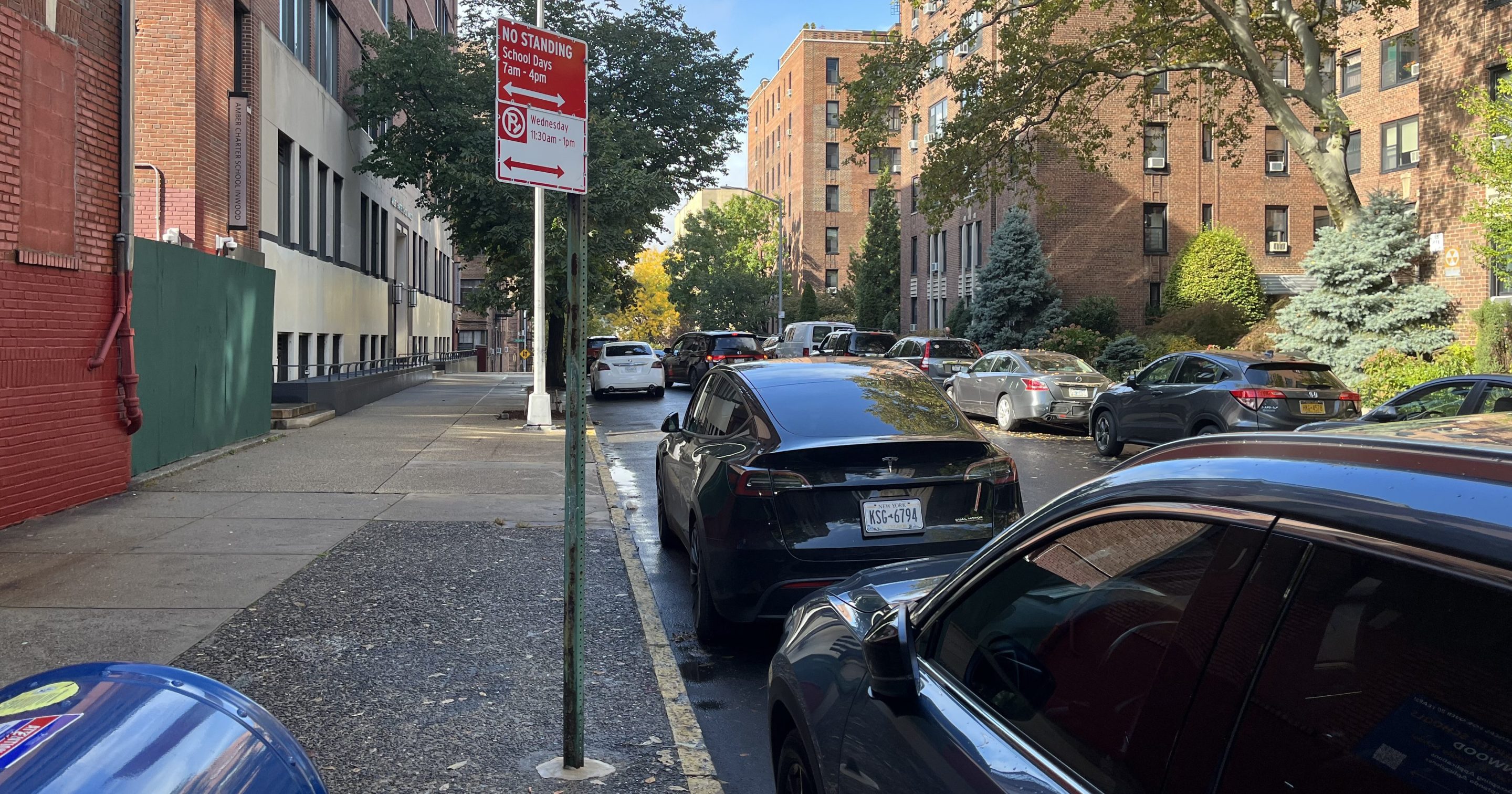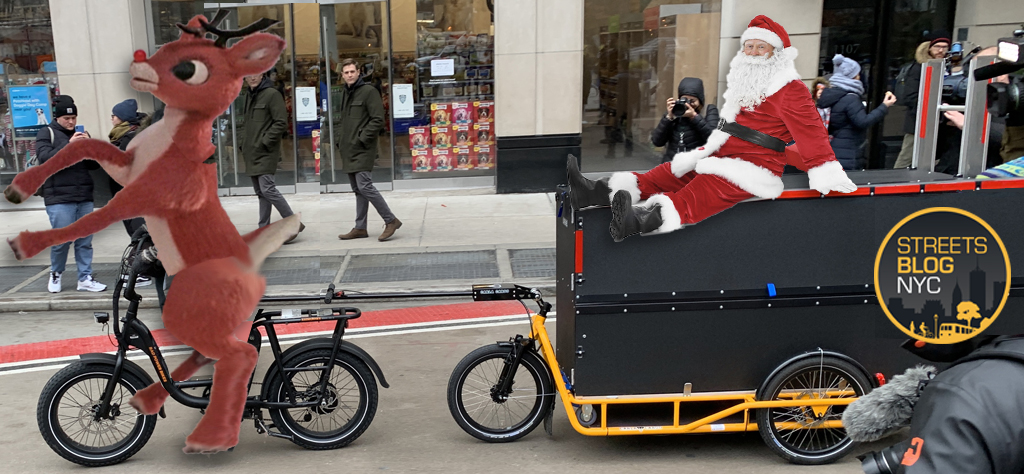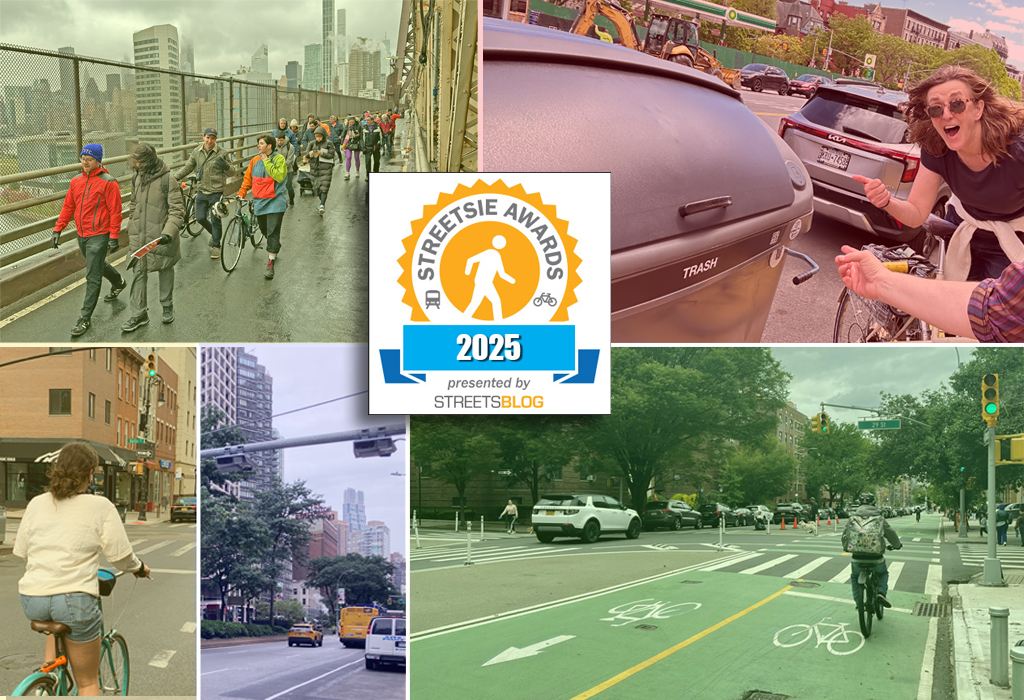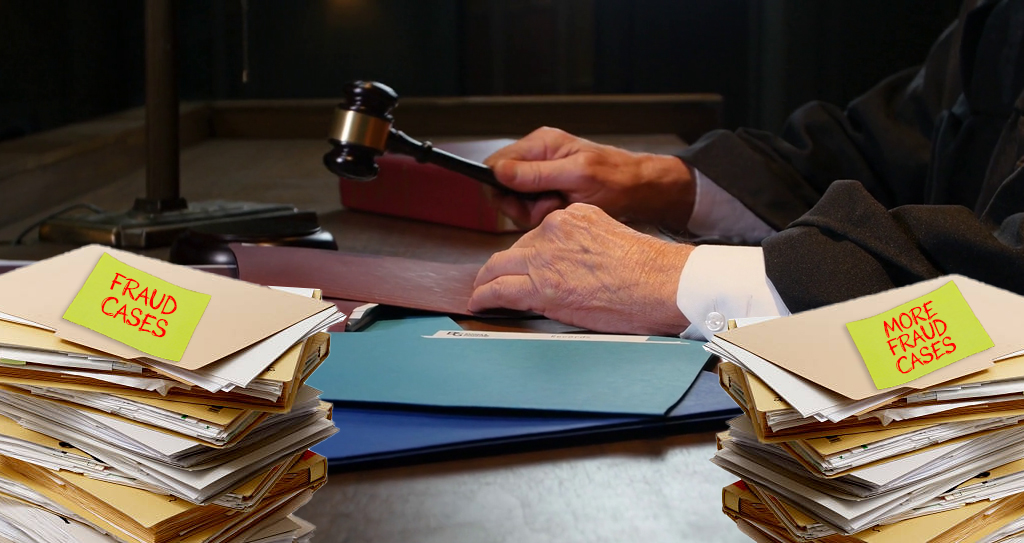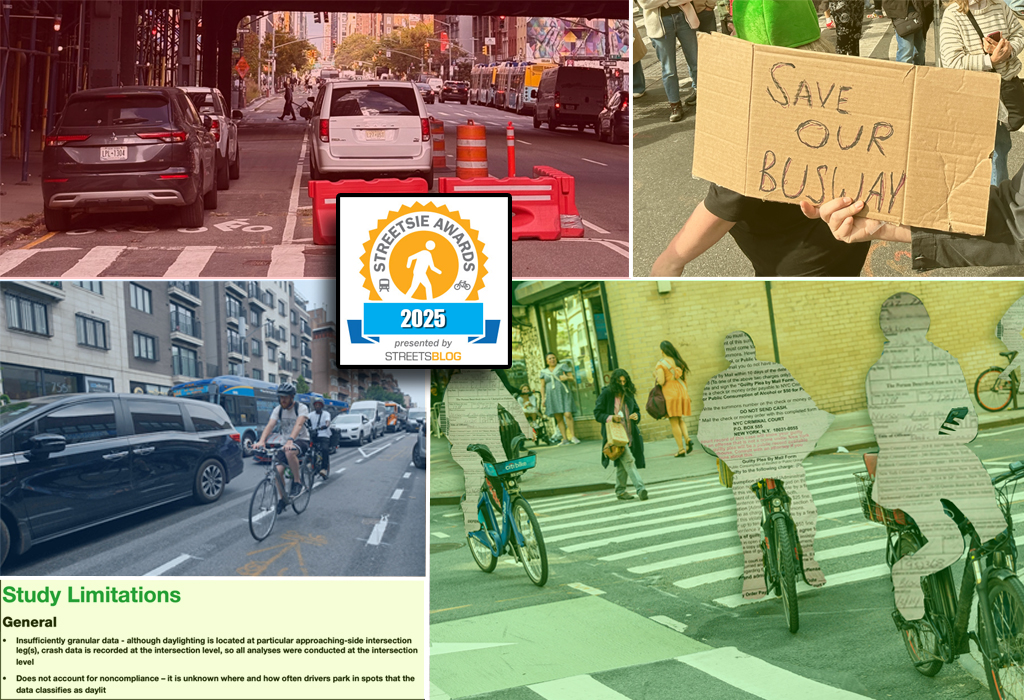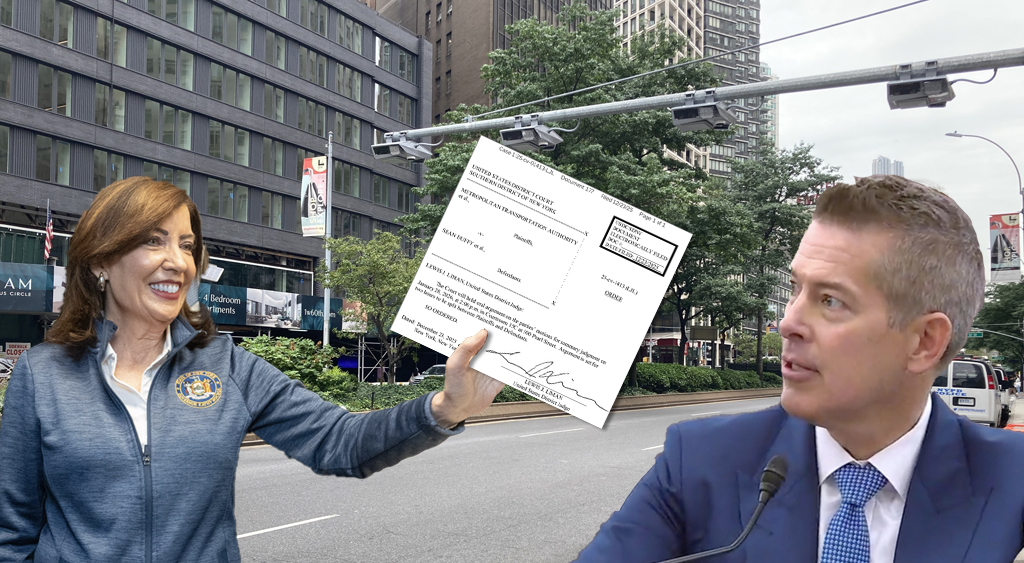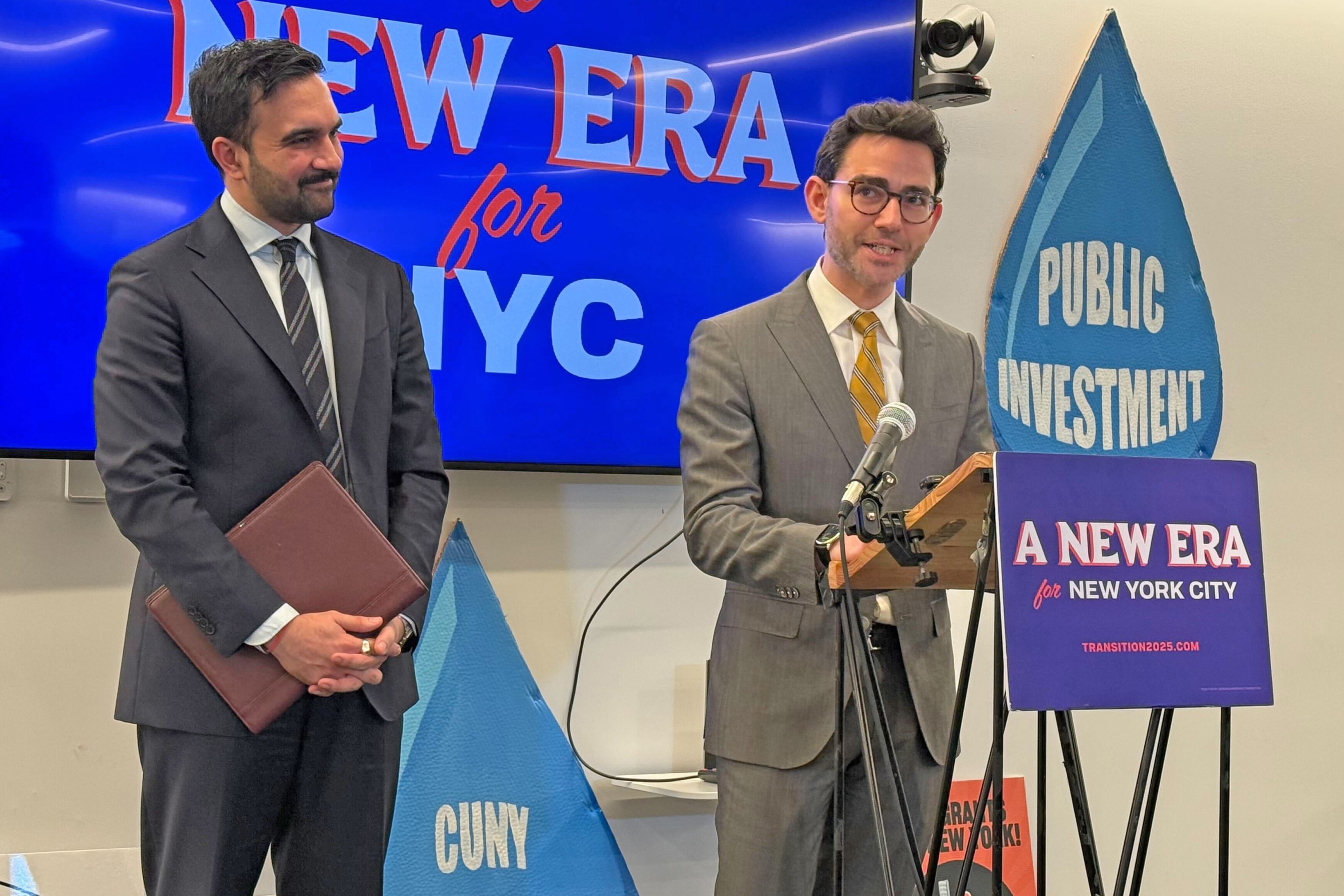A City Council proposal to force commercial vehicles making deliveries to compete for curb space with taxis and other for-hire vehicles would lead to more double parking and congestion, city officials warned on Monday.
A bill by Council Member Justin Brannan (D-Bay Ridge) "weakens the efforts to better manage congestion on our streets," Department of Transportation Deputy Commissioner Eric Beaton testified to Council members.
"As written, Intro 1000 would displace delivery vehicles’ access to the curb, and increase the potential for these vehicles to double park,” Beaton said.
Brannan's bill would allow for-hire vehicles to park or stand in commercial loading zones for up to 30 minutes — effectively rendering them unusable for their intended purpose of providing space for deliveries. Zach Miller, the vice president of government affairs at the Trucking Association of New York, testified that the organization's truck drivers report that commercial loading zones are blocked by parked non-commercial vehicles 35 percent of the time.
"On average, [truck] drivers spend 15 to 30 minutes searching for parking. The result is more congestion, higher emissions, and late or missed deliveries. Expanding access under this bill would only make matters worse, at a time when the city needs freight efficiency more now than ever," said Miller in a statement. "We should be looking for ways to better allocate space so that all professional drivers — freight and livery alike — can operate safely and efficiently."
DOT has greatly expanded commercial delivery zones in recent years to reduce double parking amid a boom in online retail. Brannan's bill would reverse that progress, according to opponents.

Drivers ask for 'relief'
Brannan proposed the bill as a way to improve bathroom access for taxi and for-hire vehicle drivers. Drivers who support the bill testified to having health issues because of long shifts with limited bathroom access.
The city operates just 112 taxi relief stands for all FHVs — 70 are available to both taxis and app-based drivers while 42 stands are for taxis only. Most relief stands are in Manhattan (70), followed by Queens (27), the Bronx (12), and Brooklyn (3). None are in Staten Island.
The number of taxi stands has not grown as the number of registered for-hire drivers exploded in recent years. DOT on Monday testified that it would work with the Taxi and Limousine Commission to create more of these zones. Drivers advocates said they have been hearing that for years.
"Drivers have been hearing that ad nauseam for decades in this city,” said Bhairavi Desai, the president of the New York Taxi Worker Alliance, who supports Intro 1000. "We by no means are close enough for the number of stands that drivers actually need."
But neutering delivery zones is not the way to fix the problem of city streets overwhelmed by more and more of the tech industry's on-demand cars and online deliveries.
“FHVs need and deserve their own dedicated curb space for loading and unloading passengers and to take important personal breaks. We ought to redouble those efforts dedicated to FHV-specific solutions rather than implement a death sentence for commercial loading zones,” livable streets group Open Plans, which shares a parent org with Streetsblog, said in a statement.
“DOT has made great strides in expanding this space, and it would be a shame to throw that progress away by allowing free reign for any FHV to park in commercial loading spaces. This would be akin to taking one small step forward and dozens of large steps backwards."

Before the proliferation of ride-hail apps, the only cars using taxi relief stands were yellow and green cabs. drivers recounted. Other drivers mostly worked from bases and didn’t “cruise” for rides, meaning they had a place to use the restroom before and after scheduled trips.
Uber and Lyft drivers are classified as “black cars" although the apps have over 80,000 drivers roaming the city, they do not provide any sort of base or bathroom access for drivers who are independent contractors.
“There was a clear distinction between the base form of transportation and cruising taxis, that distinction became blurred when the City Council okayed the use of black cars to wander, to cruise, looking for an e-hail like taxis, instead of returning to the base, where they would’ve provided bathrooms," recalled Michael Simon, a member of the public who testified at Monday’s hearing.
